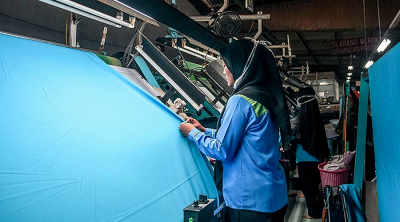
When I first started driving in Sydney, it felt like a dream in slow motion—a far cry from the swift, sometimes impatient, rhythm of Malaysian roads.
My daughter once joked, “Acha, I am pushing my car here,” as we rolled down a quiet Sydney lane at 40 km/h (about 25 mph) near a school area.
Driving in Sydney offers a striking contrast to the experience on Malaysian roads.
With school zones strictly enforced at 40 km/h during school hours—only rising to 60 km/h afterwards—and local streets often capped at 40 to 50 km/h, Sydney’s speed limits demand careful attention and patience.
Even arterial roads and motorways have clear, controlled limits ranging from 60 km/h up to 110 km/h, reinforcing a culture of safety and compliance
A culture of compliance and enforcement
There is more to Australian road safety than just numbers on speed limit signs. Sydney’s law enforcement is visible, strategic, and tough.
Police in unmarked cars appear when least expected, ready to penalize drivers performing illegal U-turns or speeding, without a hint of leniency.
“Settling” the offense with a quiet bribe is simply out of the question.
Corruption among Australian police is virtually non-existent, while in Malaysia, unfortunately, it remains a challenge with perceptions of endemic corruption and regular incentivized leniency on the roads.
By the numbers: Sydney vs Kuala Lumpur
Let’s look at the figures:

In Australia, the death rate is around 4.1 per 100,000 people, while in Malaysia it is almost four times higher, with 16 per 100,000 people.
On a daily basis, Malaysia records about 14 deaths and nearly 1,729 accidents, far exceeding the per-capita rates in Sydney.
Enforcement and strict penalties appear to make a measurable difference.
Adapting behaviors: What happens to Malaysians behind the wheel in Australia?
Malaysian drivers, typically known for fast, assertive behavior on home turf, find themselves transformed in Sydney. Why? Because rules matter. There’s effective police reinforcement, heavy fines, and a zero-tolerance policy on corruption.
Suddenly, good driving becomes habitual; everyone wears seat belts, slows down at changing traffic lights, and gives way to other drivers.
The stress of unpredictable driving and “kiasu” (selfish) antics almost disappears. The demerit point system is used without fear or favor on every trespasser.
Such conditions require constant vigilance and attentiveness, fostering better situational awareness and cautious driving.
Malaysian drivers here often reflect on their home habits, realizing that observant, defensive driving is not only safer. But also less stressful.
The presence of unmarked police cars in Sydney significantly enhances driver vigilance.
These unmarked vehicles blend in with regular traffic, creating an environment where motorists must assume that any car nearby could be a police car.
This unpredictability makes drivers consistently cautious; unmarked cars are especially effective in detecting high-risk behaviors such as speeding and making illegal U-turns, distracted driving, and failure to wear seatbelts—infractions that might otherwise go unnoticed if officers were in marked vehicles.
Because drivers cannot predict when or where they might encounter an unmarked police car, they tend to maintain steady compliance with traffic laws at all times, rather than only slowing down near visible police patrols.
This approach leads to a sustained culture of careful and law-abiding driving, a reduction in accidents, and an improvement in road safety.
The constant possibility of a police presence encourages drivers to think twice before engaging in reckless driving, making Sydney roads safer for all users.
In summary, unmarked police cars act as a powerful deterrent because they foster continuous vigilance among drivers by eliminating the chance to easily identify and evade law enforcement.
How about public transport and freight: Playing by the rules
Sydney’s travel bus operators and freight forwarders are held to equally high standards.
Buses follow routes and timetables strictly, and drivers rarely break the law. Freight operators must keep detailed logs and comply with weight, speed, and rest regulations.
Contravention risks harsh penalties, loss of license, or company shutdown.
This level of discipline reduces the likelihood of commercial vehicles causing accidents or blocking traffic, a contrast to the more lenient oversight often reported in Malaysia.
In Australia—including Sydney—express and regular bus operators are involved in a relatively small fraction of road accidents compared to other vehicle types.
From 2014 to 2023, fatal crashes involving a bus made up around 1.6 percent of all fatal road crashes.
Over this decade, there were 174 fatal crashes involving buses nationwide, averaging about 17 fatal bus crashes per year. In 2023, there were nine fatal bus crashes resulting in 17 deaths.
The main victims in fatal bus-involved crashes tend to be pedestrians and occupants of other vehicles, rather than the bus passengers themselves.
On average, only three bus passengers per year died in such incidents from 2018 to 2022, and about 239 bus occupants per year were hospitalized, with most injuries occurring during boarding or alighting rather than in the crash itself.
Death rates and accident rates for express buses in Australia are notably lower than in many countries, including Malaysia, mainly due to strict safety and roadworthiness regulations.
Australian road transport safety measures
Australia imposes rigorous safety protocols to maintain the roadworthiness of buses and trucks, which include:
■ Mandatory inspections: Heavy vehicles like buses and trucks must undergo regular, state-mandated safety inspections. In some states, these are annual and include comprehensive checks on brakes, tires, lighting, emissions, and structural integrity.
■ Australian Design Rules (ADRs): National regulatory standards ensure vehicles meet strict safety, environmental, and anti-theft criteria. They cover crash avoidance technology, occupant protection, and features such as Electronic Stability Control and Brake Assist Systems.
■ Risk-based roadside enforcement: Authorities use a combination of random and targeted roadside inspections—a strategy especially prevalent in populous states such as New South Wales—to spot-check operators and vehicles for compliance in real time.
■ Fatigue management: There are strong fatigue management systems in place for commercial drivers, including mandatory rest breaks and limits on consecutive driving hours, reducing the risk of accidents due to tired or distracted driving.
Because of these incorruptible strategies, mechanical failure is a much less common cause of bus or truck accidents than in countries with less rigorous standards.
Measures also include rapid roll-out of new safety standards, regular updates to incorporate global best practices, and higher penalties for failure to comply.
These policies contribute to Australia’s notably low rate of fatal bus accidents even though the country has extensive and heavily used intercity bus and truck networks.
This framework not only keeps the bus fleet roadworthy, but also sets a benchmark for vehicle safety and operational standards, directly translating to fewer fatalities and making the roads significantly safer for all users compared to countries with less stringent oversight.
Stringent controls and laws are absolutely essential to protect lives on the road.
Driving is an inevitable part of modern life, whether for commuting, logistics, or leisure.
While advances in technology may one day usher in an era of driverless cars and automated trucks, we must remember that as long as vehicles exist, there will be people behind the wheel.
Sydney’s safer roads simply show how strict enforcement, regular vehicle inspections, and a culture of compliance dramatically reduce accidents and fatalities.
The presence of unmarked police cars ensures constant driver vigilance, as well as how maintaining rigorous safety standards for buses and trucks keep vehicles roadworthy, thus saving lives every day. These are the key lessons for Malaysia where road accidents remain alarmingly high.
Ultimately, protecting lives on the road requires a commitment to enforcing traffic laws with integrity, maintaining vehicles to exacting standards, and fostering responsible driving behavior.
It is a collective responsibility—one that can save countless lives and create safer roads for all.

(Ravindran Raman Kutty is an active social worker.)
ADVERTISEMENT
ADVERTISEMENT








































